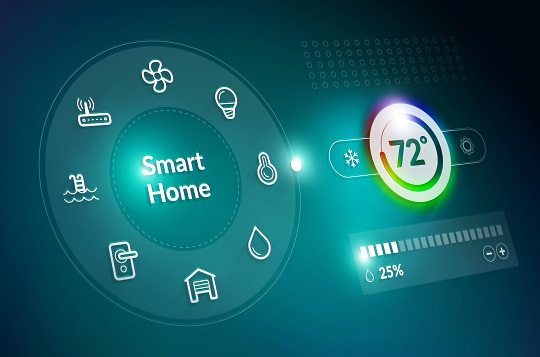Are Smart Homes the New Connected Car?

According to Danni Santana at Insurance Networking News, rumor has it that smart homes could do for home insurance what telematics did for auto insurance. We’re not talking about just another type of policy. Rather, smart homes could become a tool for claims avoidance, underwriting and improved customer interactions. In short, they could be the next step in the evolution of an industry.
Telematics and smart homes – what do they have in common?
Quick history lesson: When usage-based auto insurance hit the market, it handed insurers piles of data on a silver plate. Suddenly, they could track driver behavior, bringing new accuracy to risk assessment. Then, when UBI moved beyond the OBD device to the smartphone, insurers could leverage the smartphone to introduce driver scoring and actually partner with customers to improve their risk profile and lower claims volume.
A wealth of data. The gamification of safe driving. A sleek, fully-branded customer experience. Smartphone-based telematics brought auto insurance right out of the bronze age.
Compare that to smart homes. According to Gartner analyst Kimberly Harris-Ferrante, there is “no set standard yet of how to leverage data insurers collect from households,” said Santana. But data is an asset whose worth and applicability tends to reveal itself in time – and when it does, the payoff is big.
Case in point. “It’s easy to forget that when [Facebook] filed to go public on February 1, 2012, it was just a single website and an app that the experts weren’t sure could ever be profitable,” said Harry McCracken at Fast Company. Zuckerberg wasn’t sure how to monetize the massive amounts of data that Facebook was accumulating, but he recognized the value of that data, and knew that the answer was only a matter of time. Where data exists, opportunity follows.
As for the other big benefits that telematics brought to auto insurance – lowering claims volume and improving customer experience – no wait needed. Connected doorbells, water sensors, smoke detectors and more can provide a new layer of protection against loss. The result is a boost in profits for the insurer, according to Stacey Higginbotham at Fortune.
It’s also an opportunity for insurers to position themselves as “a more positive and proactive presence in people’s lives.” That shift in relationship is revolutionary. In auto and home insurance alike, long lags in the typical communication cycle are a threat to customer retention in the long haul. Both telematics and smart homes offer a way to increase communication frequency while adding value, redefining the insurer as a partner: a positive, consistently-present player in the customer’s day-to-day.
Adoption timeline – what to expect
Speaking of customers, they’re not grabbing up smart home devices hand over fist yet. For many of these devices, the value proposition has some ground to cover before it transitions from “a toy for rich folks,” in Higginbotham’s words, to a product that makes sense to the average American.
Nevertheless, nearly half of insurers believe connected devices will drive revenue growth in the next three years. Two out of five firms have made ties with the maker of some type of connected device. Having recognized the potential that smart homes represent, insurers are getting involved; for example, offering premium deductions to policyholders who choose to install connected devices.
That involvement stands to speed consumer adoption, which will make smart homes an essential consideration in home insurance eventually, even among those insurers who were slower to adopt.
Will your system get you through the door?
The lack of consistency in the type of sensors and data that come with smart homes poses a problem that connected cars never had to face. “For insurance companies actively looking to invest in smart homes, finding a vendor whose network works well with all of the different types of sensors in the market also remains a burden,” Santana said.
Insurers need a system that can handle data on that scale. Those who don’t have one will not be able to get involved. Make no mistake, the largest insurers will be playing in this arena. For smaller insurers to compete, they’ll need a robust, cost-effective software platform like Silvervine Software.
Why let your legacy system handicap your growth? With Silvervine’s modular, flexible system, you can rollout your new software in as little as 90 days. Download our Losing Your Legacy report or Request a Demo to learn more.
